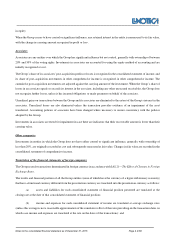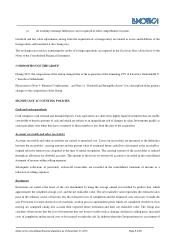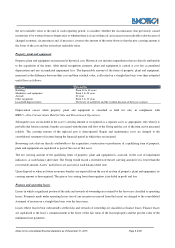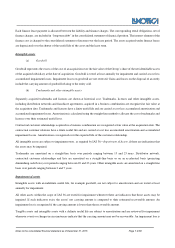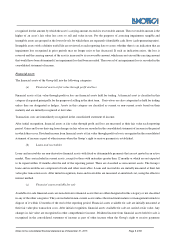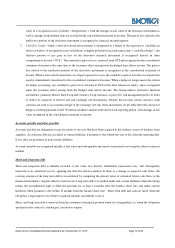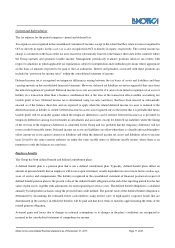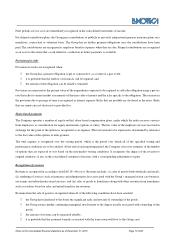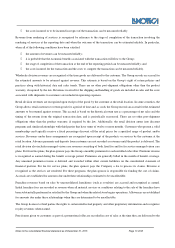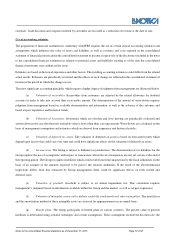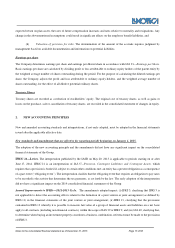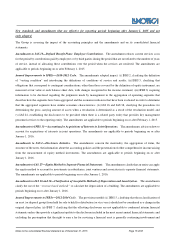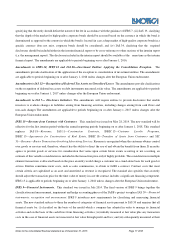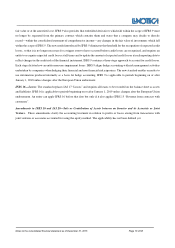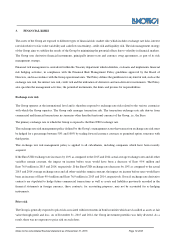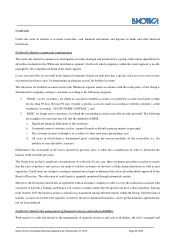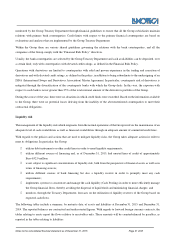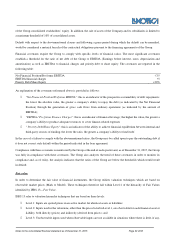LensCrafters 2015 Annual Report Download - page 108
Download and view the complete annual report
Please find page 108 of the 2015 LensCrafters annual report below. You can navigate through the pages in the report by either clicking on the pages listed below, or by using the keyword search tool below to find specific information within the annual report.
Notes to the consolidated financial statement as of December 31, 2015 Page 14 di 68
customer. Trade discounts and coupons tendered by customers are recorded as a reduction of revenue at the date of sale.
Use of accounting estimates
The preparation of financial statements in conformity with IFRS requires the use of certain critical accounting estimates and
assumptions which influence the value of assets and liabilities as well as revenues and costs reported in the consolidated
statement of financial position and in the consolidated statement of income, respectively or the disclosures included in the notes
to the consolidated financial statements in relation to potential assets and liabilities existing as of the date the consolidated
financial statements were authorized for issue.
Estimates are based on historical experience and other factors. The resulting accounting estimates could differ from the related
actual results. Estimates are periodically reviewed and the effects of each change are reflected in the consolidated statement of
income in the period in which the change occurs.
The most significant accounting principles which require a higher degree of judgment from management are illustrated below.
(a) Valuation of receivables. Receivables from customers are adjusted by the related allowance for doubtful
accounts in order to take into account their recoverable amount. The determination of the amount of write-downs requires
judgment from management based on available documentation and information, as well as the solvency of the customer, and
based on past experience and historical trends;
(b) Valuation of inventories. Inventories which are obsolete and slow moving are periodically evaluated and
written down in the case that their net realizable value is lower than their carrying amount. Write-downs are calculated on the
basis of management assumptions and estimates which are derived from experience and historical results;
(c) Valuation of deferred tax assets. The valuation of deferred tax assets is based on forecasted results which
depend upon factors that could vary over time and could have significant effects on the valuation of deferred tax assets;
(d) Income taxes. The Group is subject to different tax jurisdictions. The determination of tax liabilities for the
Group requires the use of assumptions with respect to transactions whose fiscal consequences are not yet certain at the end of
the reporting period. The Group recognizes liabilities which could result from future inspections by the fiscal authorities on the
basis of an estimate of the amounts expected to be paid to the taxation authorities. If the result of the abovementioned
inspections differs from that estimated by Group management, there could be significant effects on both current and
deferred taxes;
(e) Valuation of goodwill. Goodwill is subject to an annual impairment test. This calculation requires
management’s judgment based on information available within the Group and the market, as well as on past experience;
(f) Valuation of intangible assets with a definite useful life (trademarks and other intangibles). The useful lives
and the amortization method of these intangible assets are assessed for appropriateness on an annual basis;
(g) Benefit plans. The Group participates in benefit plans in various countries. The present value of pension
liabilities is determined using actuarial techniques and certain assumptions. These assumptions include the discount rate, the


